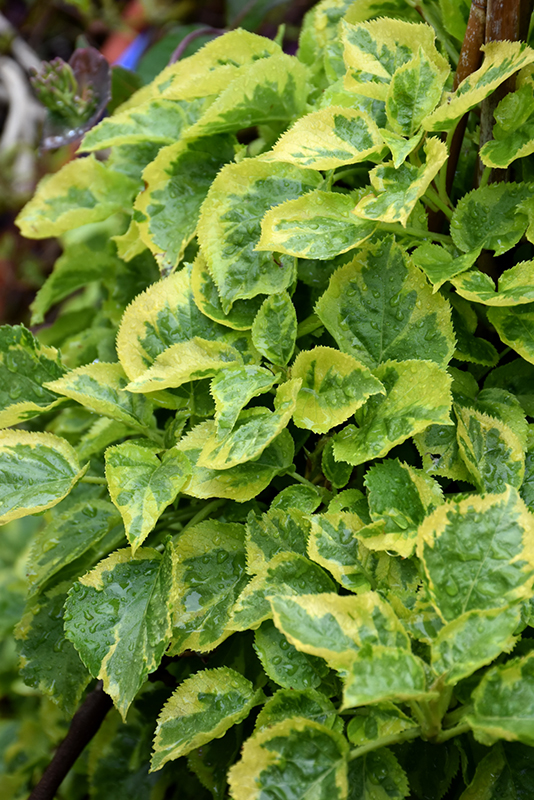Miranda Climbing Hydrangea Hydrangea anomala 'Miranda' Height: 40 feet Spread: 24 inches
Sunlight:
Hardiness Zone: 5a Other Names: Mirranda Description: A vine-type hydrangea with attractive golden variegated leaves and delicate, fragrant lacecap-style flowers; red-brown bark exfoliates and gives winter interest; self-clinging to many vertical structures and even trees, makes a great color accent Ornamental Features Miranda Climbing Hydrangea features dainty fragrant white lacecap flowers along the branches from late spring to early summer. It has attractive yellow-variegated dark green foliage. The heart-shaped leaves are highly ornamental but do not develop any appreciable fall color. The peeling brown bark adds an interesting dimension to the landscape. Landscape Attributes Miranda Climbing Hydrangea is a multi-stemmed deciduous woody vine with a twining and trailing habit of growth. Its relatively coarse texture can be used to stand it apart from other landscape plants with finer foliage. This woody vine will require occasional maintenance and upkeep, and is best pruned in late winter once the threat of extreme cold has passed. It has no significant negative characteristics. Miranda Climbing Hydrangea is recommended for the following landscape applications; Planting & Growing Miranda Climbing Hydrangea will grow to be about 40 feet tall at maturity, with a spread of 24 inches. As a climbing vine, it tends to be leggy near the base and should be underplanted with low-growing facer plants. It should be planted near a fence, trellis or other landscape structure where it can be trained to grow upwards on it, or allowed to trail off a retaining wall or slope. It grows at a slow rate, and under ideal conditions can be expected to live for 70 years or more. This woody vine does best in partial shade to shade. It prefers to grow in average to moist conditions, and shouldn't be allowed to dry out. It is not particular as to soil type or pH. It is highly tolerant of urban pollution and will even thrive in inner city environments. This is a selected variety of a species not originally from North America.![]()
![]()
![]()
![]()
![]()
![]()
![]()
![]()
![]()
![]()
![]()
![]()
![]()

